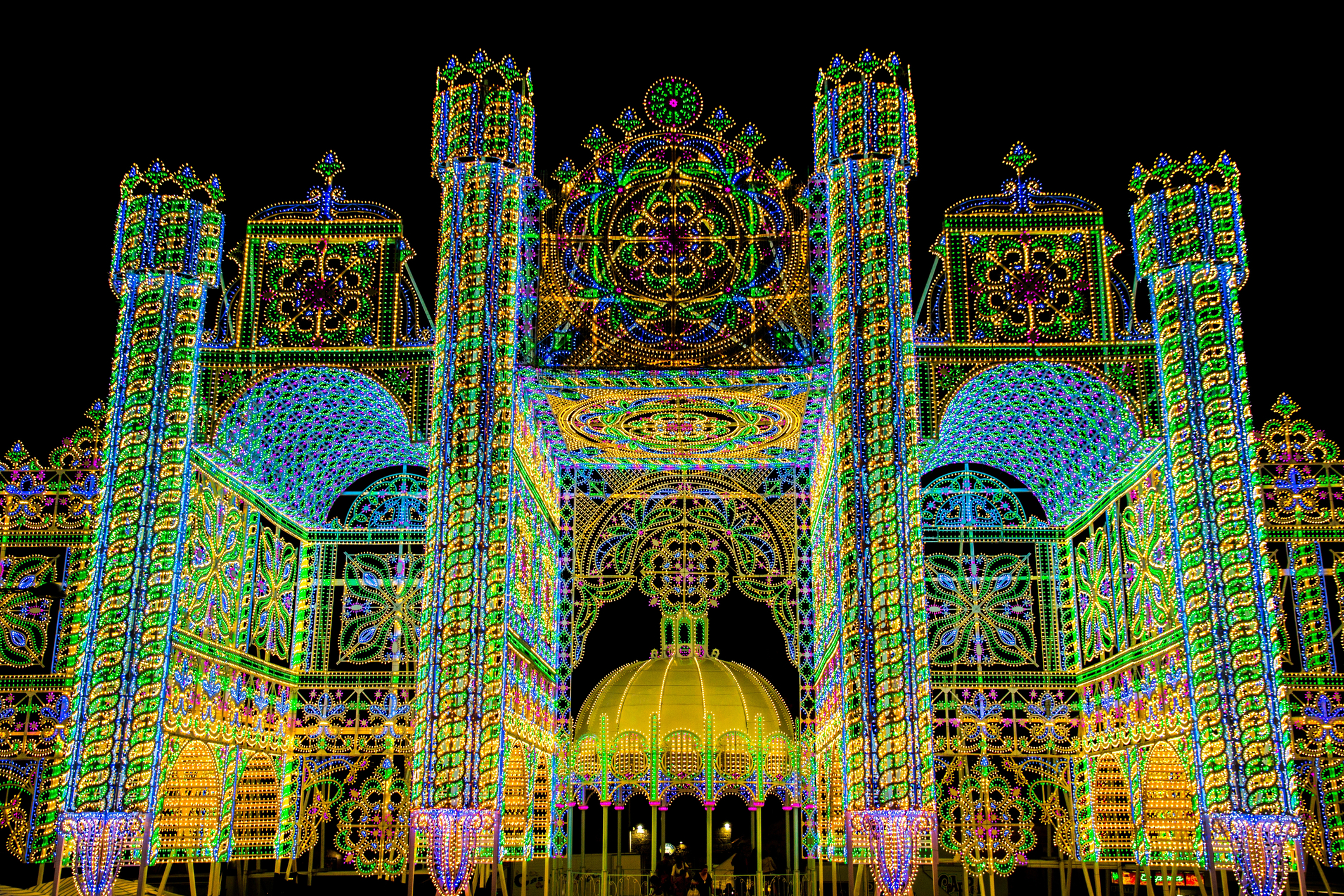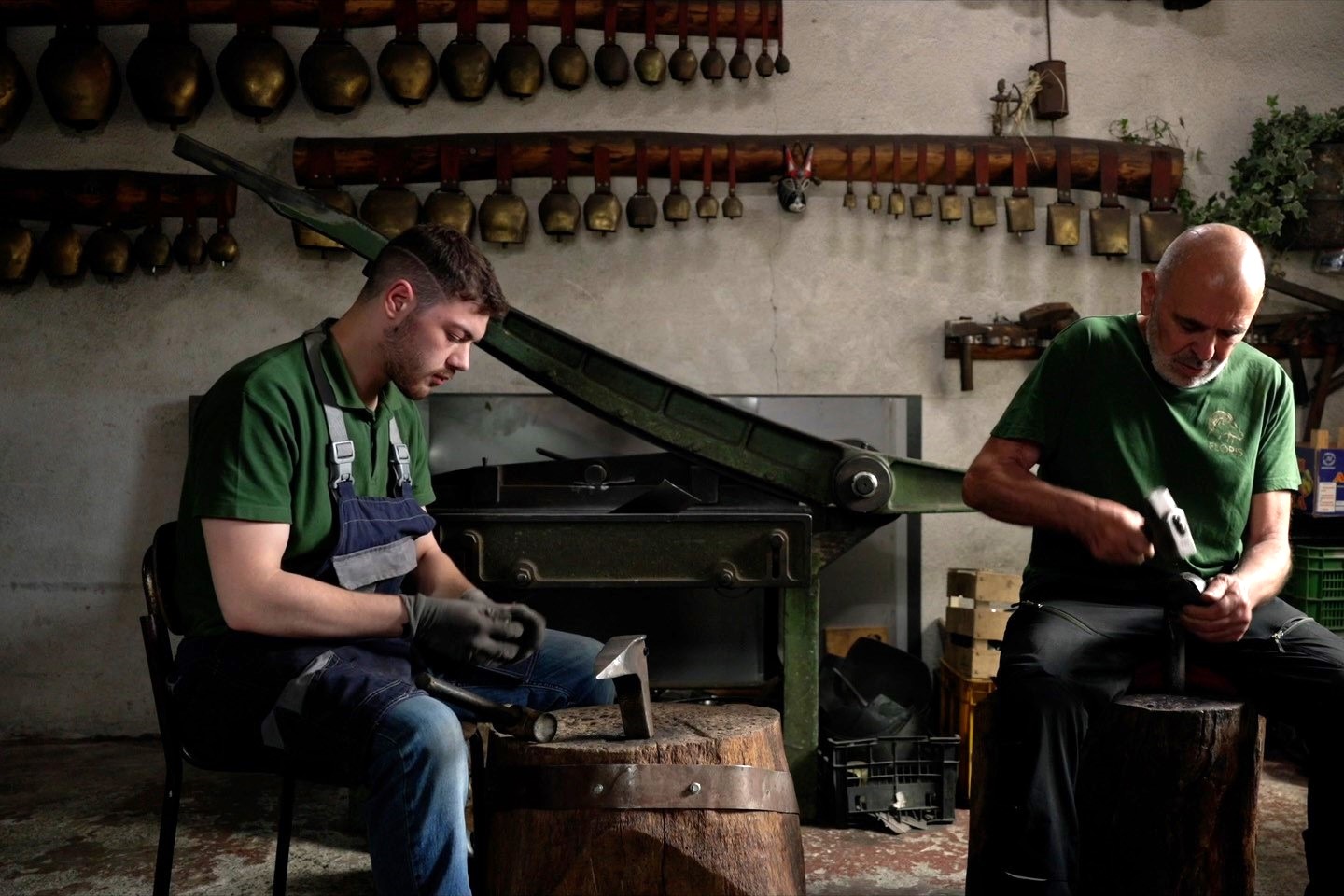Tradition, religion, heritage, and passion: from one generation to the other, a small town in the Apulia region, Scorrano, has been able to keep all these things untouchable and unique and give them expression during a festival called “Festa delle Luminarie”.
Those who had visited the village way before it became famous know how this tradition was once mainly fed by religion and family’s legacy. Nevertheless, the history of this festival goes back to the 20th century and it is related to the existence of small family-run businesses that have been developing and installing the so-called “luminarie” to celebrate local Patrons and religious feasts. This was especially true for this small town where only 7 thousand people live: there, a few local firms used to wait for the village’s feast in order to install the most beautiful and spectacular illuminations they had been working on in the months before.
Their beloved patron, whose name is Santa Domenica, has become a symbol of this tradition: Domenica, the Christian martyr, was initially the daughter of Doroteo and Arsenia and, once she rejected the wedding proposal coming from a noble man, she was reported and prosecuted by Emperor Diocleziano. Like many other Christians who were persecuted because “enemies” of Rome, Domenica was tempted and tortured in order to make her deny her faith. As this did not happen, she was eventually decapitated. The legend tells about an elderly woman who dreamt of Domenica stating her willing to be the Patron of Scorrano and to help the village get rid of the plague in 1600s. Once the miracle had happened, she would have also asked to celebrate it on July 6, the date of her martyrdom. The moment would have been also remembered by lighting up houses with small candles to prove people’s affection and gratitude towards the Santa. For centuries, locals have been preserving a very small celebration, until the early 1900s, when the tradition of luminarie started becoming popular.
The word ‘luminaria’, coming from the Latin word lumen, refers to both the ‘object which gives out light’ and to the ‘lights’ used for religious celebrations, consisting in oil lamps provided with lampshades, made in coloured paper. Later on, during the 1700s, light decorations were ligneous scaffolding, but only in the 1800′s the scaffoldings came unhooked from the buildings’ front end and become self-supported powered by gas.
Over time, the light decorations on the street or in the squares are the result of designers and architects’ work: the whole work is made of several pieces, from single parts and frames which can be easily mounted. Then, while the lights are in different colours, the frames are kept white to better reflect the light. Nowadays, technology would allow to use different colours, however most artisans choose a combination which allows to create special themes and keep harmony and elegance. While designers pick every year the theme of the illuminations, another important part of the job is made by artisans who put all the pieces together: they stain the bulbs, spray paint on them, and, once the bulbs are ready, they fasten them in the frames. A mix of patience and precision, technique and ability which has become a real art.
In the last few years, Scorrano has turned into the “Capitale Mondiale delle Luminarie”, and this has been possible thanks to some local family-run businesses that, every year on July 6, can show their new works to visitors. While in the past the event was an attraction especially for locals and people from surrounding areas, today’s visitors from all around Italy take a trip here on these days. The event comes with music and fireworks and let everybody enjoy a show where the art of making luminarie comes together with creativity. From the Milan’s Dome to Tour Eiffel, from the Colosseum, the small square and the streets around give life, every year, to all new, amazing architectural structures.
This happens especially thanks to some local firms, who have historically work on unique decorations for the event: this is the case of the so-called Marianolight company, which is among the Italian Historical Companies recognized by the Italian Chamber of Commerce. Launched in 1898 by Salvatore who used to be a ‘paratore’, the person who sets the decoration up, the art has been followed by Eliseo and Lucio. Three generations in which ability, creativity, and passion have kept and at the same time transformed this art. A similar heritage has been preserved by another local firm, which started in 1965 to light up the streets and squares with electricity. In 1985, master Cesario De Cagna and his son Giuseppe started being popular worldwide, from Texas in the US to Tokyo in Japan, to Spain, the Netherlands, France, Turkey, South Korea.
While each company, thanks to great designers, craftsmen, and artisans, expresses its own vision and creativity in a special way, they all share the same spirit: as both Lucio Mariano and Giuseppe De Cagna said soon after this year’s show, the hard work, month after month, day after day, always comes with the joy of sharing unique emotions that only these special light decorations, together with music, can give.































